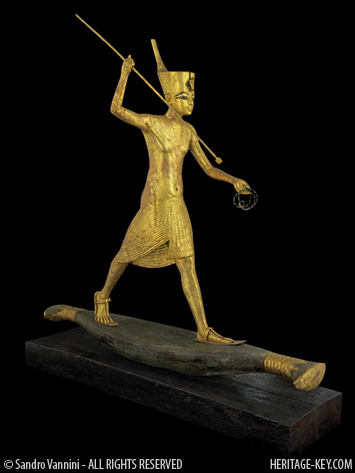 The story of Bronze Age Santorini (Thera) is one that has become a legend. Located between Crete and mainland Greece, this island supported a thriving civilization that reached its peak between 2000 1600 BC. Its main city, Akrotiri, had its own naval fleet and had trade connections throughout the Aegean and Near East. Its people produced beautiful frescoes thatdepicted everything from boxing matches toshipsand even antelopes.
The story of Bronze Age Santorini (Thera) is one that has become a legend. Located between Crete and mainland Greece, this island supported a thriving civilization that reached its peak between 2000 1600 BC. Its main city, Akrotiri, had its own naval fleet and had trade connections throughout the Aegean and Near East. Its people produced beautiful frescoes thatdepicted everything from boxing matches toshipsand even antelopes.
This civilization came to an abrupt end at some point in the late 17th century BC, when Akrotiri was devastated by earthquakes, causing the people to flee. Shortly thereafter a massive volcanic eruption occurred, burying the city.
Scholars have speculated that these events served as the basis for the legend of Atlantis an advanced civilization that fell in a single night.
From Platos Timaeus(Translation by Benjamin Jowett)
There occurred violent earthquakes and floods; and in a single day and night of misfortune all your warlike men in a body sank into the earth, and the island of Atlantis in like manner disappeared, and was sunk beneath the sea….
Raos
Yesterday, at a presentation on the University of Toronto campus, Dr. Marisa Marthari, of the KA Ephorate of the Prehistoric and Classical Antiquities Greece, discussed a new discovery that adds a new sub-plot to this story.
Her team is in the process of excavating a site called Raos. Its a building complex on the Akrotiri peninsula, but a good distance from the ancient city itself. The team has dated itto the time when Akrotiri was at its height – before the volcanic eruption. The site wasnt spared the volcanos wrath, before the team could get to the archaeological remains they had to clear out a layer of pumice and ash.
Its very special its unique, Dr. Marthari said. It combines characteristicsfrom both the town and from the… villages.
While the complex is isolated in a rural area, it contains frescoes and an enigmatic gold ring an object which has never been found on Santorini, during this time.
However Raos also contains a courtyard – a construction feature that is not found in the city of Akrotiri and is more associated with rural areas.
Frescoes and the Gold Ring
The team is in the process of conserving a series of frecoes that were found on a mud-brick wall of the complex. Dr. Marthari showedpictures of them duringher presentation. One of them contains depictions of rosettes (a type of rose) and multicolour patterns that look like a dartboard.
 The wall painting at Raos is related to the wall painting at Akrotiri, Marthari said, explaining that decorations like these can also be seen in the ancient city.
The wall painting at Raos is related to the wall painting at Akrotiri, Marthari said, explaining that decorations like these can also be seen in the ancient city.
Not all the frescoes are well preserved with some having little more than drabs of color.
Themost unusual artefact from Raos is the remains of a gold ring that was found in one of the rooms. Its the first real piece of gold jewellery that has come to light on Thera, she said. It would have been worn on the finger. Its a mystery how it got to the island, the team needs to run tests to see if they can figure this out.
Marthari wasn’t able to release a picture of the ring and frescoes for publication. However, she did give us a general picture of the site which can be seen at the top of this article.
Other features found at Raos include the remains of conical rhytons, a vessel with two holes in it that were used in libation rituals. The team also found bits of local pottery and a small amount of ceramics that appear to have been imported from Minoan Crete.



